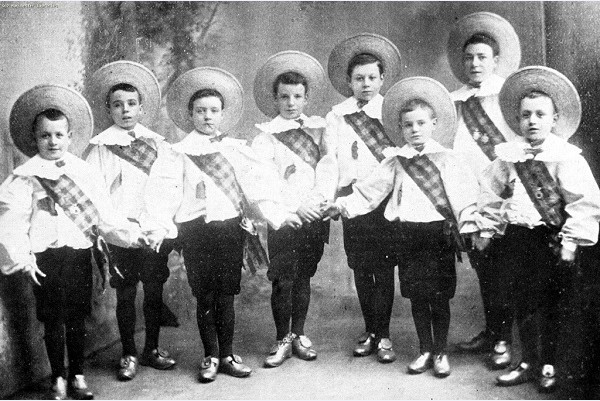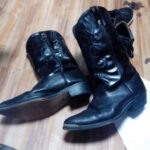Charlie Chaplin, a name synonymous with silent film and comedic genius, is globally recognized for his iconic Tramp persona. His oversized shoes, derby hat, and distinctive waddle are instantly recognizable. However, before he charmed the world on screen, Chaplin honed his performance skills in a less celebrated but equally formative part of his early career: Clog Dancing. This often-overlooked period reveals a crucial foundation for his physical comedy and stage presence, transforming him from a poverty-stricken boy into a seasoned entertainer.
Chaplin’s connection to footwear is well-documented, even tracing back to his ancestor, a boot-maker. This lineage foreshadowed the significance shoes would play in his most famous role. After his initial foray into film with “Making A Living” proved unremarkable, Chaplin’s breakthrough came with the creation of The Tramp. Legend has it he assembled the costume from studio wardrobe pieces: a too-small jacket and derby, and Fatty Arbuckle’s voluminous trousers paired with Ford Sterling’s size 14 shoes, deliberately worn on the wrong feet. These oversized shoes were not just a visual gag; they dictated The Tramp’s distinctive, splay-footed walk, a key element of his physical comedy that would captivate audiences for decades.
Alec Guinness, renowned actor and later co-star of Chaplin’s daughter Geraldine, emphasized the importance of footwear in character development, stating that “getting his shoes right was his first step in finding a performance.” For Chaplin, this was literally true. His performance, particularly from his second film onwards, was deeply rooted in his shoes. His gait, his runs, and his signature spins were all amplified and made funnier by the awkwardness and exaggeration the large shoes imposed. While influences like Fred Kitchen, a fellow performer from the Fred Karno company, and childhood impressions of a crippled tramp named Rummy Binks contributed to his movement style, it was the deliberate choice of oversized footwear that cemented the unique physical language of Chaplin’s Tramp. Interestingly, this mastery of movement was prefigured by his training and early success as a clog dancer.
 The Eight Lancashire Lads clog dancing troupe, featuring a young Charlie Chaplin (possibly in the center), showcasing early 20th-century clog dance performance.
The Eight Lancashire Lads clog dancing troupe, featuring a young Charlie Chaplin (possibly in the center), showcasing early 20th-century clog dance performance.
The narrative of Chaplin the clog dancer, or “clog-wallopper” as it was colloquially known, remains a surprisingly understated chapter in his biography. At the tender age of nine, this became Chaplin’s first professional engagement. This opportunity, orchestrated by his estranged father, Charles Chaplin Sr., a popular entertainer himself, offered an escape from the dire poverty of South London. Instead of providing child support, Chaplin Sr. recommended his son for a vacancy in a clog dancing act called “The Eight Lancashire Lads,” managed by Mr. William Jackson, who would then send a small weekly sum to Chaplin’s mother. Despite lacking Lancashire roots and any prior professional dance or singing experience, young Charles Jr. joined the troupe in early 1899 as the new eighth member. He underwent a rapid six-week immersion, learning synchronized clog dance routines in unfamiliar wooden-soled shoes, even adopting a Lancashire accent. He debuted with the group in a pantomime and subsequently toured for nearly two years. While described as “clog-wallopping,” footage of a later iteration of the group from 1931 reveals a style closer to tap-dancing. The performances included solo singing and dancing segments, demonstrating the boys’ versatility. “The Eight Lancashire Lads” were a hit, garnering rave reviews praising their “very fine exhibition of clog-wallopping” and “charming” dances that delighted audiences. These young performers maintained a rigorous touring schedule throughout 1900, sometimes performing late into the night alongside major show business luminaries like comedians George Robey and Dan Leno, figures who also influenced the visual and comedic style of Chaplin’s Tramp. Driven by ambition, Chaplin left the act in December 1900 to pursue acting roles. However, the discipline, performance skills, and confidence he gained under Jackson’s tutelage, performing for vast audiences, proved invaluable. Chaplin himself acknowledged the lasting impact: “It was good training,” he later remarked, “fitting us for the harder work that comes before the goddess of success began to throw her favours around.”
In conclusion, while Charlie Chaplin is celebrated for his cinematic achievements, his foundation in clog dancing provides crucial insight into the development of his physical comedy and enduring stage presence. This early career experience, often overshadowed by his film stardom, was instrumental in shaping the legend of Charlie Chaplin, the beloved Tramp, whose every step, spin, and stumble owed a debt to the rhythms and rigor of clog dancing.

